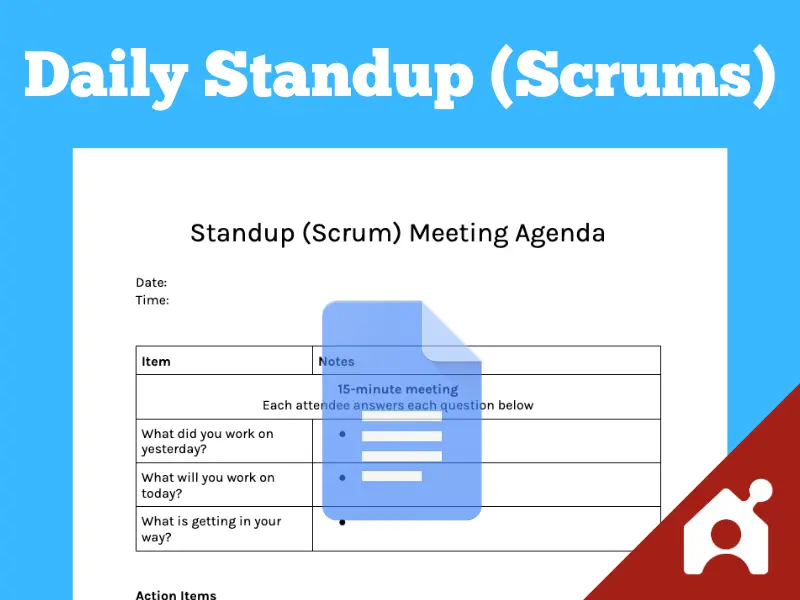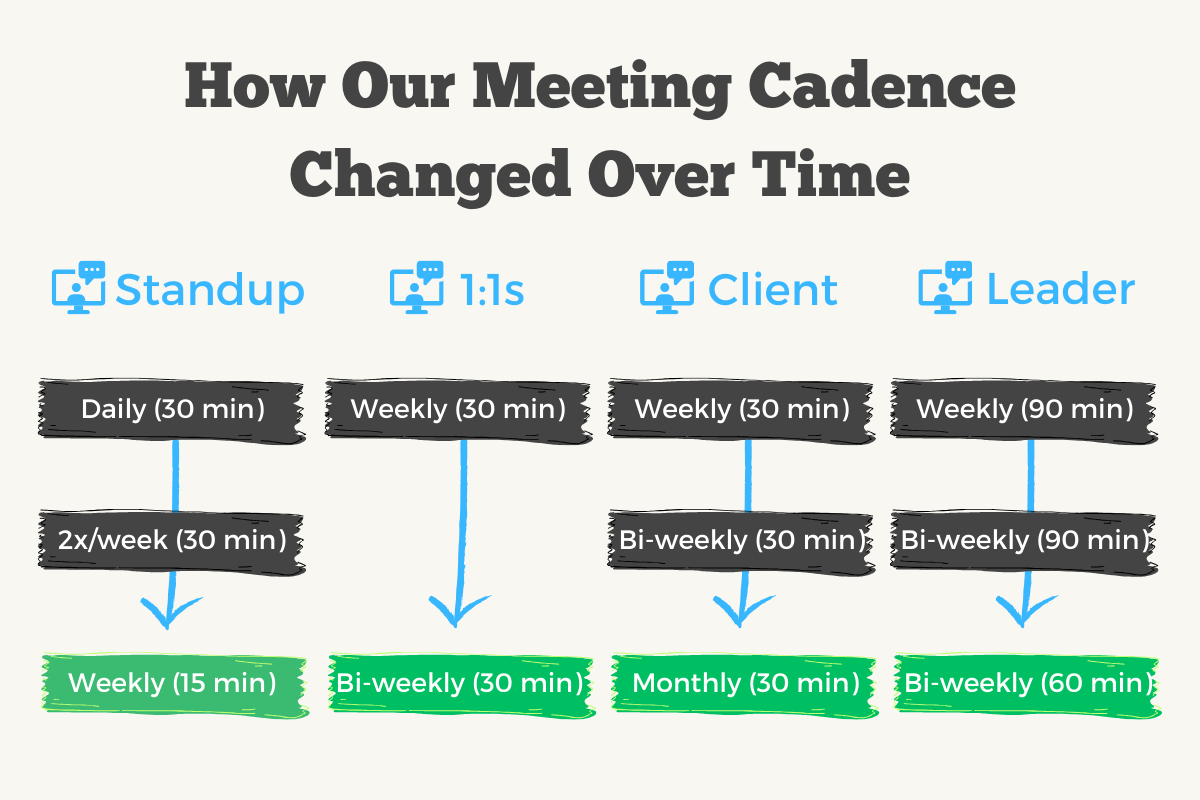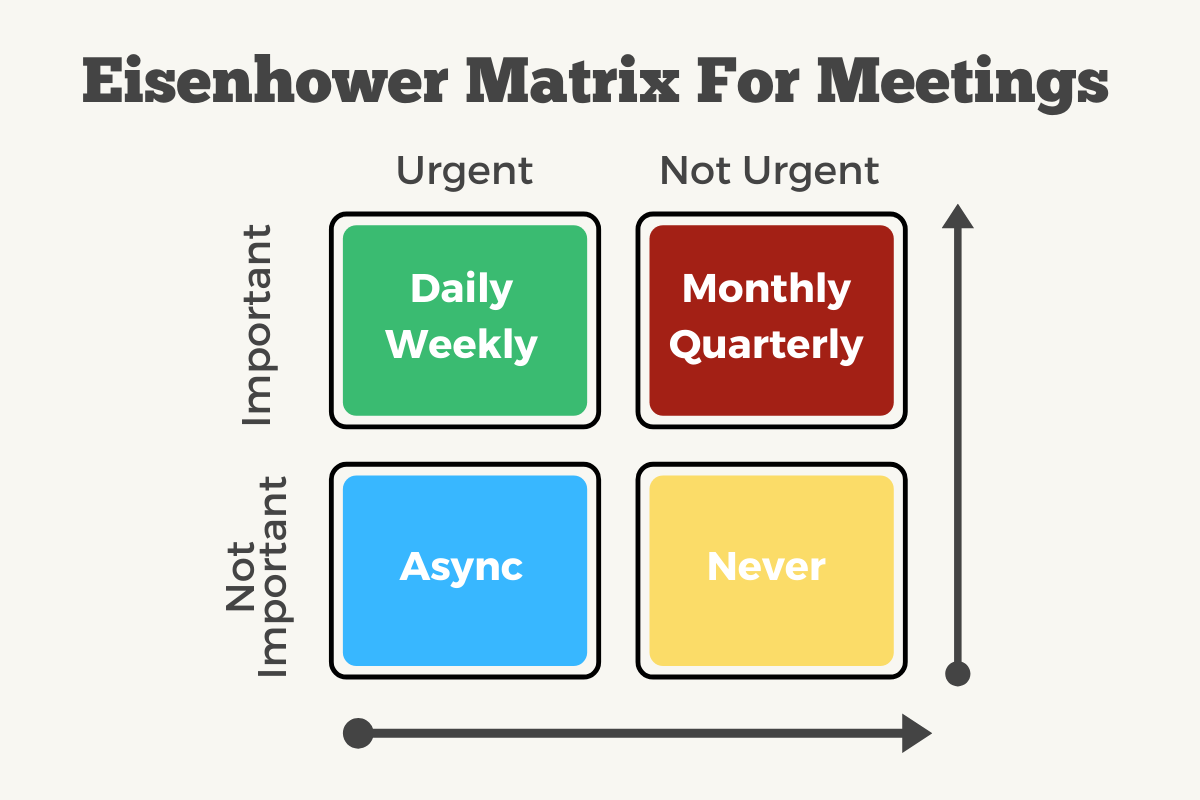Free Daily Standup/Scrum Meeting Agenda Template

Access the free agenda in Docs | Download all 50 for $47
This is part of our series on meeting agenda templates. You can edit this daily standup meeting agenda in Google Docs or Word or print it out.
Meeting Agenda Templates > Project Management Agendas > Standup Meeting Agenda
I ran daily standups (or scrum meetings) for my marketing agency for five years. There isn’t much to the agenda itself (you’ll see below), but what you ask at each standup must be consistent and be able to fit all team member updates into 15 minutes.
Below, you’ll find a daily standup meeting agenda and my tips on how and when to use these types of meetings. After that, you’ll see an asynchronous standup template if you’d rather skip the meeting altogether. Click one of the links below to jump to a section that interests you most:
Standup (Daily Scrum) Meeting Agenda
Purpose: To synchronize activities and create a plan for the next 24 hours in a development team or a team working on a project together.
Template:
- Attendees: All team members working on the project, Scrum Master
- Frequency: Daily
- Duration: 15 minutes
Process:
- Start and end on time
- Set a consistent time for the meeting to occur each day
- Screenshare your project management board
- Go around one-by-one to share updates
Agenda:
- What did you work on yesterday?
- What will you work on today?
- What is getting in your way?
Access the free agenda in Docs | Download all 50 for $47
Who should attend daily standups?
This is generally who will attend all five types of scrum meetings.
- Scrum Master
- Facilitator: The Scrum Master ensures that the meetings run smoothly and stays within the time limit.
- Scrum Coach: Acts as a coach to the team, helping members use the Scrum methodology correctly and efficiently.
- Project Team Members
- All software developers or people who participate in the priorities of the sprint
See Also:
- The Only 5 Scrum Meeting Agenda Templates You Need
- 3 Project Kick-Off Meeting Agendas
- 41 Types Of Meetings Defined: The Full Library
How To Manage Scrum Agendas Effectively
After five years of running a marketing agency team with Scrum, here are some unique things I learned about daily standups:
- The point of agile is to do more and plan less. Don’t let ‘Death by Meeting‘ get in the way of that goal.
- Daily standups can be dangerous. By meeting daily, you may incentivize people to work on things that can be done in one day (urgent but not important things).
- Consider time zone differences. If you are all if the US, try to find a morning time for all. If your team is all over the world, asynchronous standups will work better.
- Daily standups can quickly feel useless. If you have eight people all sharing one by one, one individual person may only care about what two others have to say. Therefore, the other six updates are a waste of time. Put real thought into the value of your standups.
- As Scrum Master, it is your job to keep people out of the minutia. Pull people out of their detailed tasks and up a level.
- Stay on time. The point of a standup is to meet quickly (15 minutes maximum), not to meet daily. If you can’t meet within 15 minutes, you need to fix something rather than extend the time period.
- Screenshare or visually share the backlog board as you talk. That drives home accountability and helps everyone see the bigger picture.
Should you do standups daily? (Probably not)
Like I said in the introduction, I’ve run standup meetings for years. But throughout those years, we cut WAY BACK on our standups. In an article I wrote about meeting cadence (I’d recommend reading that next), I discussed how our standups evolved over time.
- We went from daily, 30-minute standups when we first implemented Agile/Scrum
- Then two times per week for 30 minutes each (I think it was Monday and Thursday)
- Then one standup per week for 15 minutes
As we got the hang of the Scrum Methodology, we went from 150 minutes of standup meetings to 15 minutes per week, a 90% drop. Here’s why:
- Agile Project Management is a way to cut down on the time it takes to plan and manage a project so you can spend more time doing the project.
- If you have too many meetings, you are loading up admin time that can’t be used for real project time.
- Plus, with daily standups, you are telling your employees to work on things that can be done by the next day. Those might be the most urgent, but they may not be the most important.
If your team is new to Agile/Scrum, you should start with daily standups to get the habit down. But once you get the pattern, find ways to cut back without losing the benefits.
Asynchronous Daily Standup Template (No Meeting)
Purpose: To get on the same page daily or multiple times per week without having a meeting.
- Contributors: All team members working on the project, Scrum Master
- Frequency: Daily, 2-3x per week, or weekly
- Duration: N/A (gathered asynchronously through a shared doc, project management software, email, or Slack)
Process:
- The Scrum Master sends reminders to all team members to submit their asynchronous updates by a certain time and day
- Ideally this message is automated
- All team members fill out their specific information (quick bullet points) where all can view
- The Scrum Master gathers any roadblocks or ideas that need to be discussed for the next meeting (which could be a sprint planning meeting, sprint review, sprint retrospective)
Template (For A Shared Doc):
Async Standup: [Date]
Due By: [11 AM EST, Mon/Wed/Fri]
| Person | Yesterday | Today | Roadblocks |
|---|---|---|---|
| [Team member #1 name] | |||
| [Team member #2 name] | |||
| [Team member #3 name] |
Should you do asynchronous standups/scrums? (Probably)
For most teams, I think asynchronous standups are the preferred method today. While standup meetings help get people on the same page, there are too many downsides and limitations (especially if your team is remote first).
I created this graphic below for about meeting cadence. This is one way to determine when your meetings should occur.
If you think about what is shared within standup meetings, most of it is urgent (I’m working on this now and it’s been deemed a priority) but not important (it is a piece of the bigger picture, but not the whole picture). If your standups fit that criteria, I suggest asynchronous scrum updates.
Similar Meeting Agendas
Click the links below to access another meeting agenda template.
View the complete meeting agenda template library
Download This (& More) Meeting Agendas
Want to download this meeting agenda in Google Docs or Word?
It’s part of our meeting agenda library that you can download here.







